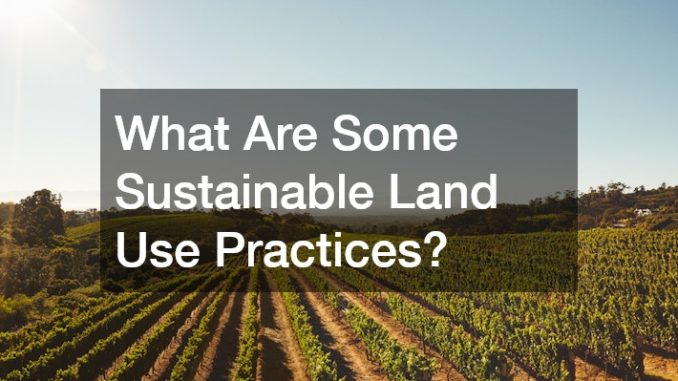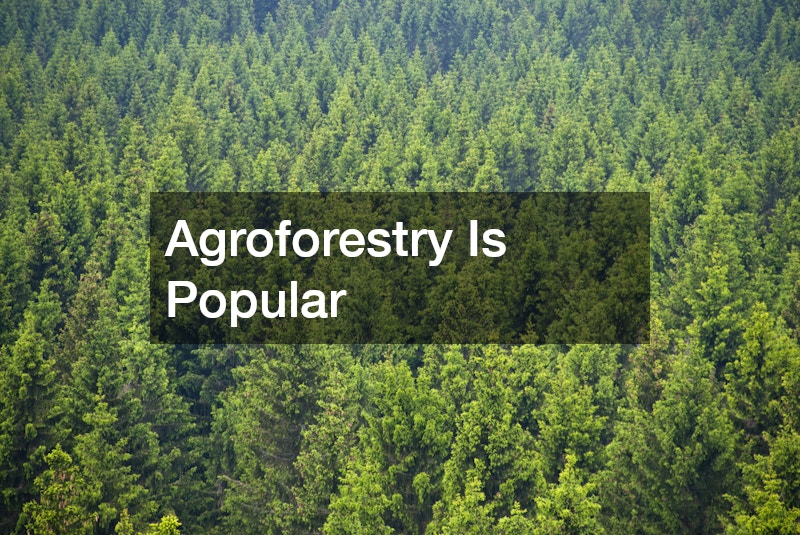
Sustainable land use practices are essential for the preservation of natural resources, biodiversity, and human well-being. As the global population continues to grow and urbanization accelerates, the demand for land intensifies. Sustainable land use is a crucial approach that seeks to balance the needs of current generations with those of future ones. It ensures that land is used efficiently, conserves resources, and minimizes environmental degradation.
Here, we will explore several sustainable land use practices that can help achieve these goals.
1. Agroforestry
Agroforestry is the integration of trees and shrubs into agricultural landscapes to create more productive and sustainable farming systems. This practice involves growing crops or raising livestock alongside trees or forest cover, which enhances biodiversity, improves soil health, and helps prevent soil erosion. Agroforestry practices, such as alley cropping (planting rows of trees between crops), silvopasture (combining livestock grazing with tree planting), and forest farming (cultivating non-timber forest products), have been shown to increase yields while promoting environmental benefits.
The presence of trees provides shade and helps reduce the impact of extreme weather conditions like droughts or heatwaves. Additionally, trees capture carbon dioxide, aiding in climate change mitigation. By enhancing soil fertility through organic matter, agroforestry practices can reduce the need for chemical fertilizers, contributing to more sustainable agricultural practices.
2. Permaculture
Permaculture is a holistic approach to land use that emphasizes designing sustainable agricultural systems that mimic natural ecosystems. The core principles of permaculture include caring for the earth, caring for people, and returning the surplus. Permaculture focuses on creating self-sustaining systems that require minimal inputs and create closed-loop environments where waste is minimized, and resources are recycled.
In permaculture, land is used in a way that enhances biodiversity, improves water retention, and supports healthy soil. This can include practices such as polycultures (growing multiple crops together to reduce the risk of pests and disease), rainwater harvesting, and composting. Additionally, permaculture emphasizes low-energy systems and the use of renewable energy sources, which reduce the ecological footprint of land use.
3. Sustainable Agriculture
Sustainable agriculture seeks to produce food, fiber, and other products while ensuring environmental health, economic profitability, and social equity. One of the most important sustainable agricultural practices is crop rotation, which involves changing the types of crops grown on a piece of land from one season to the next. This practice reduces soil depletion, controls pests, and prevents the build-up of plant diseases.
Another key element is the reduction or elimination of chemical pesticides and fertilizers, replacing them with organic alternatives like compost, mulch, or natural pesticides. Integrated pest management (IPM) is also a sustainable approach that uses biological, cultural, and mechanical methods to control pests rather than relying on chemical interventions.
Conservation tillage is another sustainable practice in agriculture that involves minimizing soil disturbance. No-till or reduced-till farming helps preserve soil structure, increase water retention, and reduce erosion. These methods contribute to the long-term health of the land by maintaining its fertility and reducing the need for synthetic inputs.
4. Urban Green Spaces
Urban areas are growing at an unprecedented rate, and one of the challenges of urbanization is ensuring that cities remain livable and environmentally friendly. Urban green spaces, including parks, community gardens, green roofs, and street trees, are essential elements of sustainable land use in cities. These spaces provide numerous environmental, social, and economic benefits.
Green spaces in urban areas help mitigate the urban heat island effect, where cities become significantly warmer than surrounding rural areas due to human activity and infrastructure. By cooling the air, green spaces reduce energy consumption, particularly for air conditioning in buildings. They also improve air quality by absorbing pollutants and releasing oxygen.
In addition to their environmental benefits, urban green spaces promote physical and mental health. They provide recreational opportunities, reduce stress, and enhance the overall quality of life for urban residents. By integrating more green spaces into cities, urban planners can create more sustainable and resilient communities.
5. Conservation of Natural Ecosystems
Conserving natural ecosystems is one of the most effective ways to ensure sustainable land use. Forests, wetlands, grasslands, and other ecosystems provide invaluable services, including water purification, carbon sequestration, and biodiversity preservation. Protecting these areas from deforestation, overgrazing, and urban sprawl is critical to maintaining ecological balance.
Protected areas, such as national parks, wildlife reserves, and marine protected areas, help safeguard critical habitats and ensure the survival of endangered species. Ecotourism is a growing industry that supports the conservation of these ecosystems by generating income for local communities and providing incentives for preserving biodiversity.
Restoring degraded lands, such as abandoned farmlands, deforested areas, or damaged wetlands, is another key aspect of sustainable land management. Restoration projects aim to bring back the natural functions of ecosystems by planting native vegetation, improving soil health, and reducing pollution. These projects contribute to the overall health of the planet by improving water quality, enhancing biodiversity, and mitigating climate change.
6. Sustainable Forestry Management
Forests are essential for regulating the Earth’s climate, supporting biodiversity, and providing resources like timber and non-timber forest products. Sustainable forestry management involves harvesting timber in a way that preserves the forest ecosystem’s health and ensures the long-term availability of forest resources. Practices such as selective logging, where only certain trees are harvested, and replanting efforts help maintain forest cover and biodiversity.
In addition to timber, sustainable forest management includes the sustainable collection of non-timber products such as medicinal plants, mushrooms, and nuts. Agroforestry practices in tropical regions also include the cultivation of crops like cocoa or coffee under the canopy of larger trees, which supports both biodiversity and economic sustainability for local communities.
7. Land-Use Zoning and Planning
Effective land-use zoning and planning are essential for achieving sustainable land use, particularly in urban and suburban areas. Land-use zoning regulations help ensure that land is used appropriately for its intended purpose, preventing the encroachment of urban sprawl into agricultural or natural areas. By planning urban growth in a way that minimizes environmental impact, cities can reduce the strain on natural resources and protect surrounding ecosystems.
Mixed-use development, which combines residential, commercial, and recreational spaces, promotes efficient land use by reducing the need for transportation and lowering carbon emissions. Sustainable land-use planning also includes the protection of greenbelts, the incorporation of renewable energy systems, and the promotion of public transportation, all of which contribute to reducing the environmental footprint of development.
Sustainable land use practices are essential to balancing human development with environmental conservation. Whether through agroforestry, permaculture, sustainable agriculture, or urban green spaces, these practices offer a holistic approach to land management that supports long-term ecological health and human well-being.

